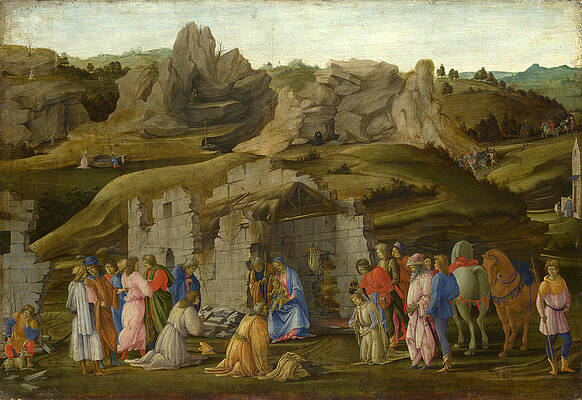Filippino Lippi
Paintings

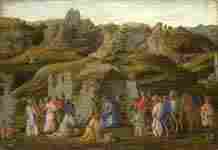
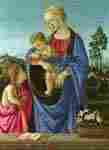
The Virgin and Child with Saint John
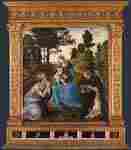
The Virgin and Child with Saints Jerome and Dominic
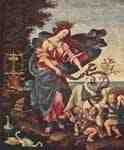
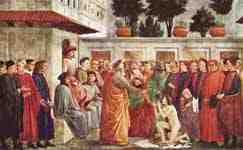
Brancacci Chapel, scenes from the life of Peter, detail

Brancacci Chapel, scenes from the life of Peter, detail
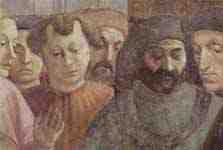
Brancacci Chapel, scenes from the life of Peter, detail

Brancacci Chapel, scenes from the life of Peter, detail

Brancacci Chapel, scenes from the life of Peter, detail
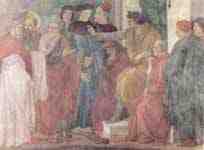
Brancacci Chapel, scenes from the life of Peter, detail
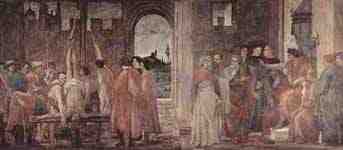
Brancacci Chapel, scenes from the life of Peter, detail
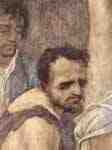
Brancacci Chapel, scenes from the life of Peter, detail
 Brancacci Chapel, scenes from the life of Peter, detail
Brancacci Chapel, scenes from the life of Peter, detail

Brancacci Chapel, scenes from the life of Peter, detail

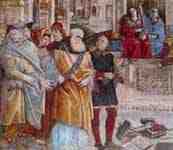
St. Thomas Aquinas and the Heretics, detail

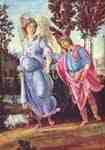

The Meeting Of Joachim And Anne Outside The Golden Gate Of Jerusalem
Drawings
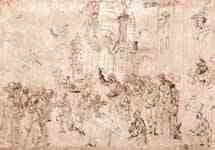
The resurrection of the Drusiana
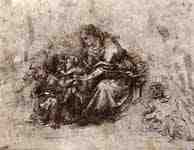
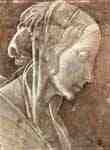
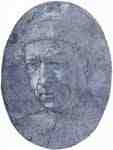
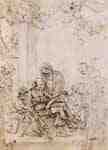
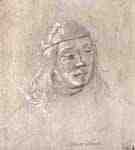


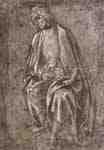
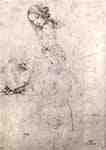
Sketch sheet, Madonna and male nude
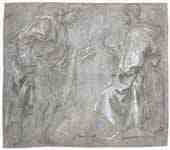
Fine Art Prints | Greeting Cards | Phone Cases | Lifestyle | Face Masks | Men's , Women' Apparel | Home Decor | jigsaw puzzles | Notebooks | Tapestries | ...
Filippino Lippi (April 1459 – April 1504) was an Italian painter working during the High Renaissance in Florence, Italy.
Biography
Born Filippo Lippi in Prato, Tuscany, the illegitimate son of the painter Fra Filippo Lippi and Lucrezia Buti, Filippino first trained under his father. They moved to Spoleto, where Filippino served as workshop adjuvant in the construction of the Cathedral there. When his father died in 1469, he completed the frescos with Storie della Vergine (Histories of the Virgin) in the cathedral. Filippino Lippi completed his apprenticeship in the workshop of Botticelli, who had been a pupil of Filippino's father. In 1472, Botticelli also took him as his companion in the Compagnia di San Luca.
His first works greatly resemble those of Botticelli's, but with less sensitivity and subtlety. The very first ones (dating from 1475 onwards) were initially attributed to an anonymous "Amico di Sandro" ("Friend of Botticelli"). Eventually Lippi's style evolved into a more personal and effective one in the years 1480-1485. Works of the early period include: the Madonnas of Berlin, London and Washington, the Journeys of Tobia of the Galleria Sabauda in Turin, Italy, the Madonna of the Sea of Galleria dell'Accademia and the Histories of Ester.
Together with Perugino, Ghirlandaio and Botticelli, Lippi worked on the frescoed decoration of Lorenzo de' Medici's villa at Spedaletto. On December 31, 1482 he was commissioned to work on a wall of Sala dell'Udienza of Palazzo Vecchio in Florence (a work never begun). Soon after (probably in 1483-1484) he was called to complete Masaccio's decoration of Brancacci Chapel in the church of the Carmine, left unfinished by the artist's death in 1428. Here he realized the Stories of Saint Peter on the following frescoes: Quarrel with Simon Magus in face of Nero, Resurrection of Teophilus' Son, Saint Peter Jailed, Liberation and Saint Peter's Crucifixion.
The work on the Sala degli Otto di Pratica, in the Palazzo Vecchio, started on February 20, 1486. It is now in the Uffizi Gallery. In the same years Piero di Francesco del Pugliese asked him to paint the altarpiece with Apparition of the Virgin to St. Bernard, now in the Badia Fiorentina, Florence. This is Lippi's most popular picture: a composition of unreal items, with its very particular elongated figures, backed by a phantasmagorical scenario of rocks and almost anthropomorphic trunks. The work can be dated to the 1480–1486 years.
Eventually he worked for Tanai de' Nerli in the Saint Spirit's Church.
On April 21, 1487, Filippo Strozzi asked him to decorate the family chapel in Santa Maria Novella with the Stories of St. John Evangelist and St. Philip. He worked on this piece intermittently, only completing it in 1503, after the customer's death. The windows with musical themes, also designed by Filippino, were completed between June and July 1503. These paintings can be seen as a mirror of the political and religious crisis in Florence at the time: the theme of the fresco, the clash between Christianity and Paganism, was hotly debated in the Florence of Girolamo Savonarola.
Filippino showed his characters in a landscape which recreated the ancient world in its finest details, showing the influence of the Grottesco style he had seen in his journey to Rome. He created in this way an "animated", mysterious, fantastic but also disquieting style, showing the unreality of something as a nightmare. In this way, Filippino portrayed ruthless executioners deformed by grim faces, who raged against the Saints. In the scene with St. Philip expelling a monster from the temple, the statue of the pagan god is a living figure which seems to dare the Christian saint.
In 1488, Lippi moved to Rome, where Lorenzo de' Medici had advised Cardinal Oliviero Carafa to entrust him the decoration of the family chapel in Santa Maria sopra Minerva. These frescoes show a new kind of inspiration, quite different from the earlier works, but confirm his continued research on the themes of the Ancient era. Lippi finished the cycle by 1493.
Lippi's return to Florence is variously assigned to the years going from 1491 to 1494. Works of this period include: Apparition of Christ to the Virgin (c. 1493, now in Munich), Adoration of the Magi (1496, for the church of San Donato in Scopeto, now in the Uffizi), Sacrifice of Laocoön (end of the century, for the villa of Lorenzo de' Medici at Poggio a Caiano), St. John Baptist and Maddalena (Valori Chapel in San Procolo, Florence, inspired in some way to Luca Signorelli's art). He also worked outside of his mother-country, namely on the Certosa of Pavia and in Prato, where in 1503 he completed the Tabernacle of the Christmas Song, now in the City Museum; in 1501 Lippi realized the Mystic Wedding of St. Catherine for the Basilica of San Domenico in Bologna.
Lippi's last work is the Deposition for the Santissima Annunziata church in Florence, which at his death in April 1504 was unfinished.
Due to Lippi's reputation, on the day of his burial all the workshops of the city closed for him.
Major works
The Coronation of the Virgin (c. 1480)—Tempera on panel, 90.2 × 223 cm, National Gallery of Art, Washington, D.C.
Madonna with Child, St Anthony of Padua and a Friar (before 1480)—Tempera on wood, 57 × 41.5 cm, Museum of Fine Arts, Budapest
Tobias and the Angel (c. 1480)—Tempera on panel, 33 × 23 cm, National Gallery of Art, Washington, D.C.
Portrait of an Old Man (1485)—Detached fresco, 47 × 38 cm, Uffizi, Florence
Three Angels with Young Tobias (1485)—Oil on panel, 100 × 127 cm, Galleria Sabauda, Turin
Self-Portrait—Detached fresco on flat tile, 50 × 31 cm, Uffizi, Florence
Portrait of a Youth (c. 1485)—Wood, 51 × 35.5 cm, National Gallery of Art, Washington, D.C.
Signoria Altarpiece (Pala degli Otto) (1486)—Tempera on wood, 355 × 255 cm, Uffizi, Florence
Annunciation with St. Thomas and Cardinal Carafa (1488–1493)—Fresco, Santa Maria sopra Minerva, Rome
Apparition of the Virgin to St. Bernard (1486)—Oil on panel, 210 × 195 cm, Church of Badia, Florence
Madonna with Child and Saints (c. 1488)—Oil on wood, Santo Spirito, Florence
St. Jerome (1490s)—Oil on wood, 136 × 71 cm, Uffizi, Florence
Apparition of Christ to the Virgin (c. 1493)—Oil on panel, 156.1 × 146.7 cm, Alte Pinakothek, Munich
Madonna and Child with Saints (1498)—affresco, 239 × 141 × 71 cm, Museo Civico, Prato
Adoration of the Magi (1496)—Oil on wood, Uffizi, Florence
Allegory (c. 1498)—Oil on wood, 29 × 22 cm, Uffizi, Florence
Allegory of Music (Erato) (c. 1500)—Tempera on panel, 61 × 51 cm, Staatliche Museen, Berlin
Crucifixion, c. 1501— tempera on panel, 31.2 × 23.4 cm, Museo Civico, Prato
Mystic Marriage of St Catherine (c. 1501–1503)—Panel, Basilica di San Domenico, Bologna
Madonna and Child, St. Stefan and e St. Jhon the Baptist (1502–1503)—tempera on panel, 132 × 118 cm, Museo Civico, Prato
Deposition (1504, finished by Perugino in 1507)—Oil on panel, 333 × 218 cm, Gallerie dell'Accademia, Florence
School works
Following works are permitted to be cited as Filippino's schoolworks.
the Madonna, Child and St. John—tondo, Keglevich collection, Budapest,[1]
Cenacolo di S. Apollonia—Florence[2]
the Virgin giving her girdle to St. Thomas—Florence[2]
St. Anthony Abbot—Florence[2]
Historical novels
Linda Proud, A Tabernacle for the Sun (Godstow Press, 2005), a literary novel set in Florence during the Pazzi Conspiracy adheres closely to known facts. Filippino features as the closest friend of the narrator, Tommaso dei Maffei, here and in the following two novels of The Botticelli Trilogy.
Linda Proud, Pallas and the Centaur (Godstow Press, 2004), deals with the aftermath of the Pazzi Conspiracy and Lorenzo de' Medici's strained relations with his wife and with Poliziano.
Linda Proud, The Rebirth of Venus (Godstow Press, 2008), the final volume of The Botticelli Trilogy, covers the 1490s and the death of Lorenzo.
Linda Proud, "A Gift for the Magus" (Godstow Press, 2012), a novel about Fra Filippo Lippi and Cosimo de' Medici. Features Filippino's birth and childhood.
Notes
Gábor Térey, The Burlington Magazine, page 183, L., 1927.
G. Bernardini, Bollettino d'Arte del Ministero della Pubblica Istruzione (Ministry of Public Education (Italy)), year 1912, page 291.
References
The Development of the Italian Schools of Painting, Volume 12, page 371 onwards, Raimond van Marle, Hacker Art Books, New York 1970.
----
Fine Art Prints | Greeting Cards | Phone Cases | Lifestyle | Face Masks | Men's , Women' Apparel | Home Decor | jigsaw puzzles | Notebooks | Tapestries | ...
----
Artist
A - B - C - D - E - F - G - H - I - J - K - L - M -
N - O - P - Q - R - S - T - U - V - W - X - Y - Z
Retrieved from "http://en.wikipedia.org/"
All text is available under the terms of the GNU Free Documentation License




